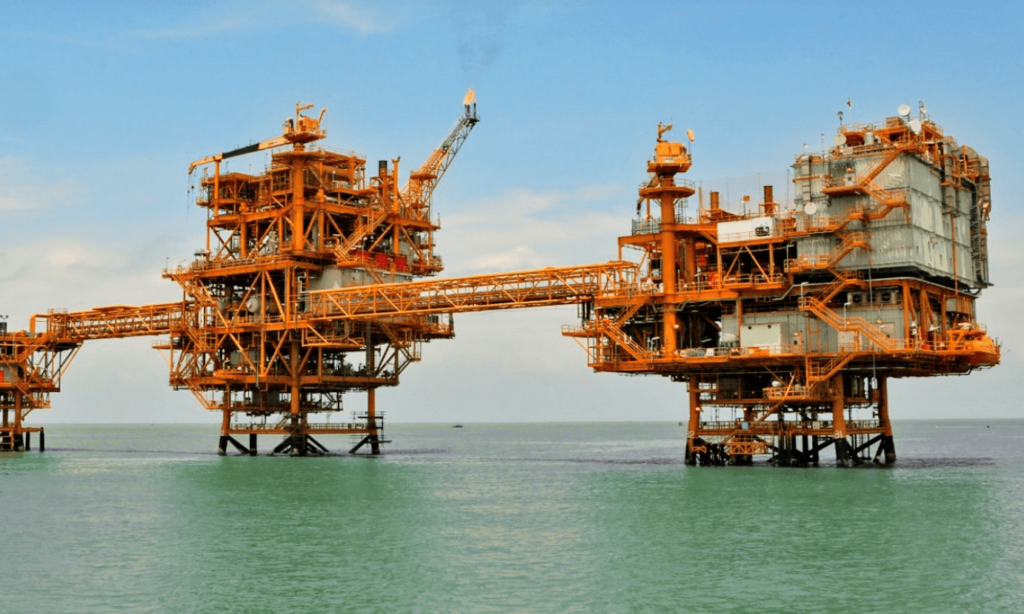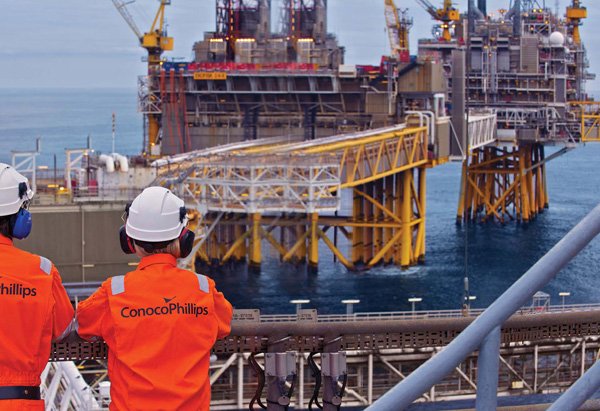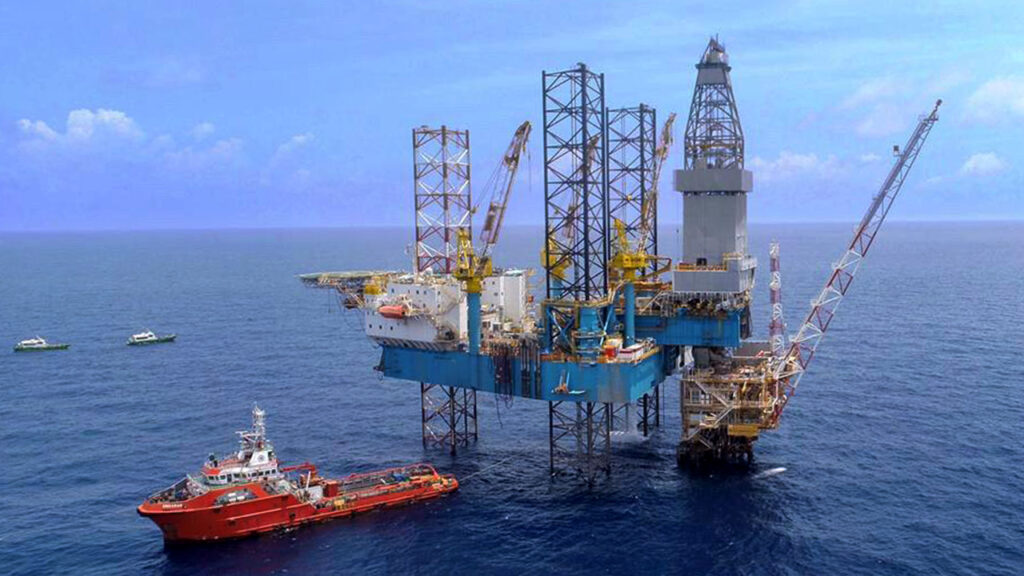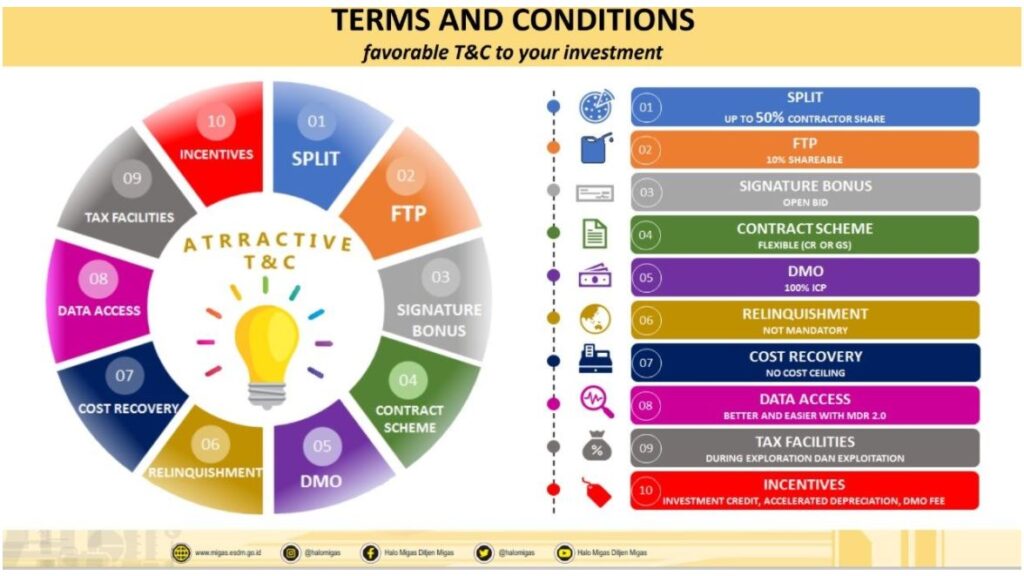
Eni Starts Gas Production at Merakes Project off Indonesia
Italian supermajor Eni said it has commenced gas production from the deepwater Merakes project, located in the East Sepinggan block in the Makassar Strait, offshore East Kalimantan, Indonesia.
The development sits in approximately 1,500 meters water depth in the Kutei Basin. It consists of five subsea wells with production capacity of 450 million standard cubic feet per day (MMSCFD), equivalent to 85,000 barrels of oil equivalent per day (BOED), tied back to the Eni-operated Jangkrik floating production unit (FPU) 45 kilometers from Merakes field.
Gas is gathered at the subsea manifold and exported 45 kilometers to the Jangkrik FPU where it is processed for export to the onshore receiving facility in Senipah via the existing Jangkrik export pipelines. Merakes gas will be partially sold to the domestic market and will also contribute to the extension of the life of the Bontang liquefied natural gas (LNG) facility, which supplies LNG to both the domestic and export markets.
Eni’s CEO Claudio Descalzi said, “We are really proud of the start-up of Merakes, a project which is synergetic with existing operated facilities and is the result of the fruitful collaboration with our partners and with the Indonesian authorities. Merakes is one of Eni key projects in 2021. It will support the growth of gas production, in line with Eni strategic goals.”
Eni is the operator of East Sepinggan block with an 65% share ownership through its affiliate, Eni East Sepinggan Ltd.; the other partners are Neptune Energy East Sepinggan B.V. with 20% shareand PT Pertamina Hulu Energi with the remaining 15% share. On 11 December 2018, the production sharing contract scheme for the East Sepinggan block was changed into Gross Split PSC to support the efficiency of oil and gas investment in Indonesia.
Neptune Energy’s Managing Director in Indonesia, Eko Lumadyo, said, “We are proud to partner with Eni on this strategic development which will help meet growing domestic energy demand in Indonesia and support the country’s export market.
“Indonesia provides Neptune Energy with strong opportunities for growth and we look forward to building on our relationship with Eni and our partners in the region. We have identified significant exploration potential in our acreage in the Kutei Basin, which offers considerable growth potential through tie-back and standalone developments.”

ConocoPhillips sells assets in Indonesia as they revisit investment in Asia Pacific
U.S. oil and gas producer ConocoPhillips will sell its assets in Indonesia’s Corridor Block for US $1.355 billion to local MedcoEnergi, while acquiring new assets in AustraliaThe American company said it will sell the subsidiary that indirectly owns the company’s 54 percent interest in the Indonesia Corridor Block Production Sharing Contract (PSC) and a 35 percent shareholding interest in the Transasia Pipeline Company.
ConocoPhillips said it is buying through its Australian subsidiary 10 percent shareholding interest in Australia Pacific LNG (APLNG) from Origin Energy for up to US $1.645 billion, which will be funded from cash on the balance sheet.“The Asia Pacific region plays an important role in our diversification advantage as an independent E&P and these two transactions enhance that advantage by lowering our aggregate decline rate and diversifying our product mix,” said Ryan Lance, ConocoPhillips chairman and chief executive officer in a statement.
The Indonesia assets that are being sold produced approximately 50 thousand barrels of oil equivalent per day (MBOED) for the nine months ended Sept. 30, 2021, and had year-end 2020 proved reserves of approximately 85 million barrels of oil equivalent, the company said. “We are also pleased to have the opportunity to effectively deploy the proceeds from the sale of our Indonesia assets toward additional shareholding interest in APLNG, which supplies LNG to long-term buyers in both China and Japan and is currently the largest supplier of natural gas to Australia’s East coast domestic market, meeting over 30% of its total demand,” added Lance.

Indonesia cuts 2021 oil and gas production targets on pandemic woes
JAKARTA: Indonesia has cut its oil and gas production targets for this year, officials at industry regulator SKK Migas told reporters on Tuesday (Oct 19), as the coronavirus pandemic impacted new projects. The oil lifting target for 2021 was cut to 665,000 barrels per day (bpd) from an earlier target of 705,000 bpd, SKK Migas’ head Dwi Soetjipto told a virtual news conference.
Gas liftings are targeted to be 5,529 million standard cubic feet per day (mmcfd), down from 5,638 mmcfd, he said.
“It turns out that the impact of 2020 pandemic caused. .. minus 20 thousand barrels of oil per day compared to which we expected,” Soetjipto said, referring to the shortfall during the third quarter.
Unplanned shutdowns happened during the pandemic while investors delayed investments, curtailing upstream activities and production, he added.
Indonesia’s oil liftings in the third quarter of the year were 661,000 bpd while gas liftings were 5,492 mmcfd, data from SKK Migas showed on Tuesday.
The data also showed that Indonesia’s liquefied natural gas (LNG) liftings from January to September this year were 149.5 standard cargoes. The regulator said in July that it expects 206.1 cargoes this year.
However, LNG cargoes are expected to increase next year and are targeted to be at 211.9 standard cargoes, SKK Migas’ data showed.

Indonesia Improves Oil and Gas Fiscal Terms to Boost Production
The Ministry of Energy and Mineral Resources (EMR) and the Ministry of Finance (MOF) are coordinating improvements in upstream oil and gas fiscal terms. The action is taken to reform regulations on upstream oil and gas contracts so as to increase production.
The Minister of Finance, Sri Mulyani, said that Indonesia was targeting 3.5%-4% growth in economy in 2021 and 2022. This goal can be realized by increasing the production of the upstream oil and gas industry because the majority of industries in Indonesia are still based on oil and gas, Sri stated on the second day of the 2nd International Convention on Indonesian Upstream Oil and Gas 2021 (IOG 2021) held in Bali on Tuesday (30/11).
To boost investment so as to increase oil and gas production, joint efforts from all parties are needed, in the forms of fiscal and incentive improvements; contract certainty, efficiency, and technology; and good governance and transparency.
The design of the upstream oil and gas industry must also be in line with Indonesia’s road map to net zero emissions in 2060. “The MOF, the Ministry of EMR, SKK Migas, and the industry must work together to develop appropriate policies, to continue to develop energy security that supports economic improvement,” said Sri Mulyani.
In a similar vein, Director of Upstream Oil and Gas Business Fostering of the Ministry of EMR, Mustafid Gunawan, said Indonesia’s oil and gas industry were facing the challenges of attracting investment and boosting exploration. The government is making efforts to provide facilities such as data access, tender access, and better terms and conditions.
“Yesterday, we opened a tender for oil and gas work areas with better terms and conditions, such as a more attractive split, 10% shareable First Tranche Petroleum (FTP), DMO price at 100% of ICP during the contract, and new terms for relinquishment (no mandatory relinquishment in the third year of contract). We also hope that easy access to data can attract investors to invest in Indonesia,” Mustafid commented.
According to Mustafid, the Minister of EMR determined a team to be in charge of work area tender, from preparing or selecting work areas to be tendered out, evaluating the areas, and preparing the terms and conditions, to conducting tender. The team is also responsible for evaluating bids.
The team consists of representatives from the Ministry of EMR, SKK Migas, and university experts. Data for work area preparation can come from anywhere, for example from proposals made by a trilateral team formed by the Ministry of EMR, who actively organizes FGDs on oil and gas potential, from recycled areas, or work areas that are relinquished, or from the results of general surveys conducted by speculative survey companies.
Every work area on offer, before it is determined by the Minister of EMR, is consulted with the provincial governments where the area is located and coordinated with the relevant agencies. This is meant as an initial dissemination of the project and as mitigation of the work area, in terms of spatial planning and use. Potential investors must understand spatial planning and use because in oil and gas operations, subsurface and surface risks are often unavoidable.
There are two models of oil and gas work area bid in Indonesia, namely direct offer tender mechanism and regular tender mechanism. The direct offer tender mechanism gives companies the opportunity to choose and conduct studies in open areas. The nominated work area must be put out to tender, though. To appreciate the company who has the initiative to nominate the work area, the company gets a privilege of right to match.
“Based on data, the direct offer tender has a success rate of more than 70 percent, which is better than the success rate of the regular tender which is around 50 percent,” said Mustafid.
Through Regulation of Minister of EMR Number 7 of 2019 on Management and Utilization of Oil and Gas Data, the government hopes that more entities will access data from the Migas Data Repository (MDR). Thus, companies can evaluate data and then submit direct bids, or even propose a work area to the government to be included in a work area bid.
For the record, IOG 2021 is an international convention organized by SKK Migas to realize the joint vision of 1 million barrels of oil per day and 12 billion cubic feet of gas per day by 2030. Energy transition is a topic that interests numerous participants during the convention.

